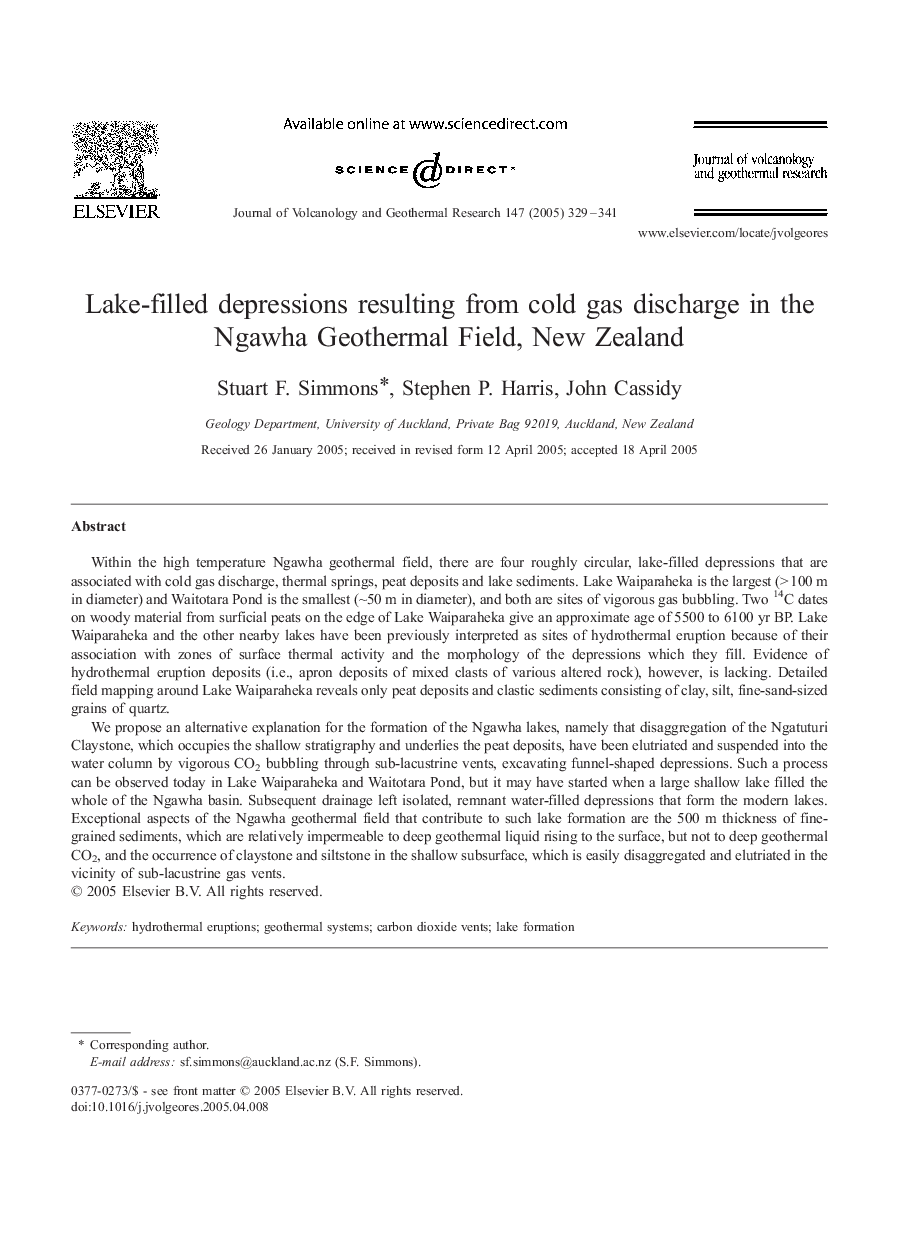| Article ID | Journal | Published Year | Pages | File Type |
|---|---|---|---|---|
| 9531066 | Journal of Volcanology and Geothermal Research | 2005 | 13 Pages |
Abstract
We propose an alternative explanation for the formation of the Ngawha lakes, namely that disaggregation of the Ngatuturi Claystone, which occupies the shallow stratigraphy and underlies the peat deposits, have been elutriated and suspended into the water column by vigorous CO2 bubbling through sub-lacustrine vents, excavating funnel-shaped depressions. Such a process can be observed today in Lake Waiparaheka and Waitotara Pond, but it may have started when a large shallow lake filled the whole of the Ngawha basin. Subsequent drainage left isolated, remnant water-filled depressions that form the modern lakes. Exceptional aspects of the Ngawha geothermal field that contribute to such lake formation are the 500 m thickness of fine-grained sediments, which are relatively impermeable to deep geothermal liquid rising to the surface, but not to deep geothermal CO2, and the occurrence of claystone and siltstone in the shallow subsurface, which is easily disaggregated and elutriated in the vicinity of sub-lacustrine gas vents.
Related Topics
Physical Sciences and Engineering
Earth and Planetary Sciences
Geochemistry and Petrology
Authors
Stuart F. Simmons, Stephen P. Harris, John Cassidy,
